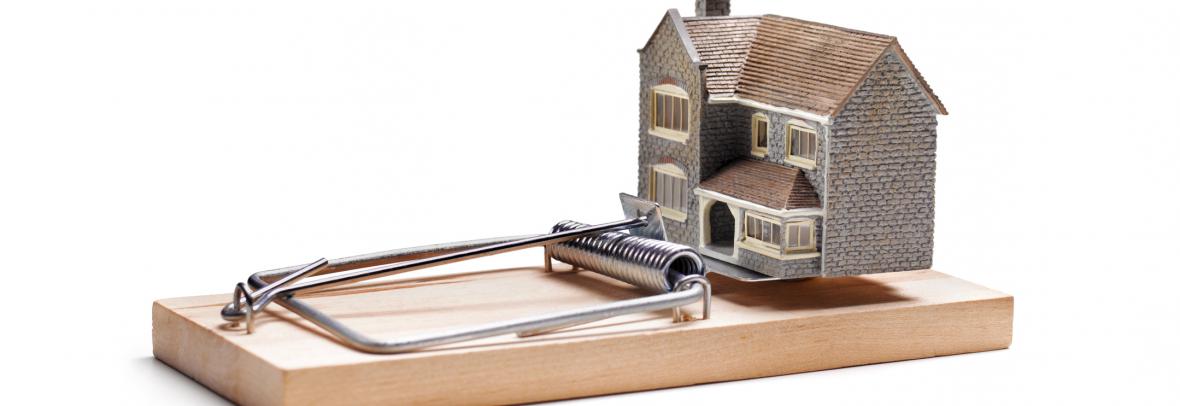
ATTOM: About 1.5M to 2M homeowners are already in some kind of forbearance, and the CFPB has now paved the way for proceedings to begin on vacant homes.
NAPLES, Fla. – Fewer zombies are on the streets these days, and not many more are expected by Halloween.
However, the ghastly man-initiated creations could reappear in a big way next year.
In this case, we’re talking zombie foreclosures, which are foreclosures of vacant properties, often abandoned by owners who couldn’t keep up, and sometimes resulting in decay and lower property values for neighborhoods.
The ongoing home-price boom has roared ahead in 2021, with Collier, Lee and Charlotte counties respectively leading the state in median percentage increases over the past year, and ranking among the top 12 in the nation. As “In the Know” reported last month from National Association of Realtors data, Collier finished third in the U.S. with a 42% bump while Lee and Charlotte were in the low- to mid-30% range.
At the same time, there’s been almost no blight stemming from vacant properties in foreclosure, according to ATTOM, curator of a national property database, that released a new report this past week.
That has happened despite economic damage to major sectors of the U.S. economy connected to the pandemic that hit early last year and a supply chain that’s gone off the rails and continues to confound manufacturers, suppliers and builders, among others.
But the number of foreclosures – and with it, the number sitting vacant – is almost certain to escalate because the federal government recently lifted a 15-month moratorium that had prevented lenders from taking back properties from homeowners who fell far behind on mortgage payments during the pandemic.
ATTOM estimates 1.5 million to 2 million homeowners are already in some kind of forbearance, and the Consumer Financial Protection Bureau, also known as the CFPB, has now paved the way for proceedings to begin on vacant homes.
“We might see an increase in zombie properties as we approach Halloween,” said Rick Sharga, executive vice president of ATTOM company, RealtyTrac.
The CFPB also has “given the go-ahead to restart the foreclosure process on loans that were already 120 days delinquent prior to the moratorium. (It’s) not unlikely that over the past 15 months many of those financially-distressed homeowners have vacated their properties.”
That could be a challenge for Florida, which ranks third overall in the highest total of zombies behind New York and Ohio. It even has more than the much larger populated Texas and California, which combined still only have a third of what the Sunshine State does.
“How much, how fast and where that happens will depend on how different banks approach the situation. Some may decide to vigorously pursue foreclosures to recoup losses from the pandemic while others give homeowners more time to get back on their feet,” said Todd Teta, ATTOM’s chief product officer. “It’s hard to imagine that zombie foreclosures will continue be so few and far between.”
Pinellas County is a state leader on highest zombie-foreclosure rates with 11.4% and ranks third in the nation among counties with at least 500 properties in the foreclosure process. Ahead of it in this order: the counties that are home to Cleveland and Binghamton, New York.
Tampa Bay, as a metropolitan statistical area, checks in at the fourth spot on the Peninsula with 5.9%, behind Volusia County MSA’s 6.9%, St. Lucie MSA’s 6.6% and Brevard MSA’s 6%.
The MSAs of Sarasota (4.2%) and Lee County (3.8%) slotted at sixth and seventh sequentially, above the state’s 3.2% level. The Collier and Ocala MSAs were near the bottom at 1.8% ahead of the 1% of Crestview-Fort Walton Beach-Destin.
Areas with high loan approval rates
The dastardly zombies are a far cry from where they were after the economic crash a decade ago. The state total now is only half of what Lee County had all by itself at one point in 2013.
As “In the Know” reported last week, it doesn’t hurt that buyers are willing to invest in properties that “are not so attractive” in a Southwest Florida market that has been largely drained of its available inventory.
The Great Recession’s financial crisis stemmed partly from an unregulated environment that allowed predatory private mortgage lending. While more rules are in place today, some counties in Florida are easier than others to obtain a home loan.
Another study out this month by the SmartAsset financial technology company looked at what areas had the highest approval rates. Manatee, Sarasota, Lee and Collier counties all ranked in the Top 8 in Florida at about 63% to 64%.
But Sumter County, where I-75 and Florida’s Turnpike intersect, topped the list by a lot more: 70%. Six of the seven highest counties in the nation can be found in the South Dakota-Nebraska-Iowa region with a range of 82% to 100%.
Florida zombie-foreclosure rates rank
Among MSAs studied by ATTOM data:
Volusia, 6.9%
St. Lucie, 6.6%
Brevard, 6%
Tampa Bay, 5.9%
Tallahassee, 4.7%
North Port-Sarasota-Bradenton, 4.2%
Cape Coral-Fort Myers, 3.9%
Escambia, 3.3%
Orlando-Kissimmee-Sanford, 2.9%
Jacksonville, 2.8%
Miami-Fort Lauderdale-West Palm Beach, 2.6%
Lakeland-Winter Haven, 2.1%
Collier, 1.8%
Ocala, 1.8%
Crestview-Fort Walton Beach-Destin, 1%
Copyright © 2021 Journal Media Group. Based at the Naples Daily News, columnist Phil Fernandez writes the column, In the Know, as part of the USA TODAY Network. All rights reserved.
Go to Source
Author: marlam



